What is a Cable Cleat?
The international standard governing Cable Cleats used in electrical installations is IEC 61914:2015. In this standard Cable Cleats are defined as “devices designed to provide securing of cables when installed at intervals along the length of the cables”. Simply put, cable cleats are used to secure, fix and route electrical cables in the positions required in an electrical installation. They can consist of single or multiple parts, plastic or metal material and include some sort of provision for securing itself to a surface or structure. Mounting surfaces that may be specified include; ladder, tray, strut, rail, wire and beam. Examples of different types of cleats securing cable to cable ladder can be seen in the image below.
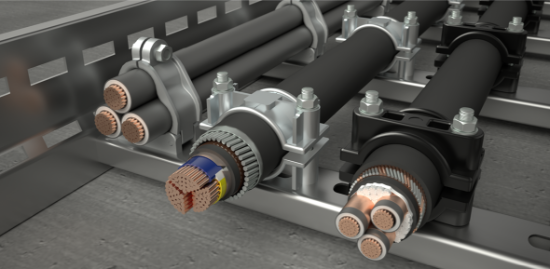
Cable cleats should be designed to ensure that cables are fixed, supported and routed in a manner that provides safe operation and reduces the risk of damage or injury in the event of an emergency or accident. Improper clamping of cables can result in loss through unnecessary downtime or even injury and death. They should at a minimum:
- Be rated for the specified cable OD.
- Provide a means of securely fixing the cable.
- Have adequate strength to secure the cable.
- Prevent excessive cable movement.
- Avoid chafing and undue stress in the cable.
Cleat Selection and How to Specify Cable Cleats
If you’re here it’s likely you may have asked yourself ‘which cable cleat should I use for this job?’ Unfortunately the answer frequently is ‘well, it depends!’ More specifically you may be wondering ‘what size cable cleats for 2.5mm SWA?’ or ‘what size cable cleat for 6mm armoured cable?’. The latter questions are much easier to answer and if you scroll to the end of this article you’ll find selection tables for all of our cleats and common cable sizes.
Cable Arrangement
The cable arrangement/configuration will primarily dictate the type of cleat required. Cable arrangements for 3 phase installations utilising single conductor cables are typically flat spaced, flat touching or trefoil. A parallel or flat arrangement of single core cables can be completed with a range of single or two-part cleats. Whereas a trefoil or quad arrangement would require a trefoil or quad type cleat respectively.
Cable Type - The type of cable being used, Single or Multi-core, as well as its Voltage Levels and Construction Low Voltage (LV), Medium Voltage (MV) or High Voltage (HV)} should be considered.
Cable Diameter - Knowing the overall diameter of the cable (measurement across the entire cross-section) is essential in ensuring the correct size of cleat is selected. It is also required to calculate the short circuit forces that the cleat may be subjected to, this can be used to determine correct cleat spacings.
Performance - A range of factors will dictate the level of performance your installation will require. The size, weight and length of run of the cable also spacing will usually influence whether you require a polymer or metallic cleat. Things such as the support structure material and environmental conditions (corrosion) can also affect your decision of cleat material. Other factors such as project specification may require special provision for performance in the event of a fire. Low Smoke or Zero Halogen options are available along with cast iron in extreme cases.
In summary, to correctly select they type of cleat you require you should be looking to obtain the following information;
1. Calculate the system peak fault current.
2. Confirm cable type and arrangement, including the overall diameter and manufacturing tolerance.
3. Confirm the support structure type and material.
4. Consider any other environmental conditions and project specification requirements.
5. Consult with the Remora Sales team who, given your requirements, will advise the most cost effective solution.
In the UK the 17th Edition Wiring Regulations (BS7671) provides current ratings and voltage drop values for all these cable configurations. Information is also available on grouping factors and spacing between circuits to achieve thermal independence.
Cleat Types
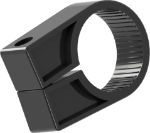
Plastic One-Part: The Clingstrap is a comprehensive range of single fixing cable cleats, providing a simple but strong means of securing cables. Suitable for use with cables or pipes ranging from 5-50.8mm in diameter. These cleats are typically used to secure low and medium voltage cables.
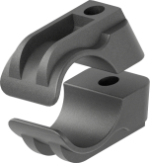
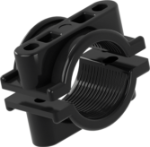
Plastic Two-Part: Available in both single-fixing and dual-fixing, accepting cable diameters from 10-135mm. These cleats offer a wider cable acceptance range and more secure fixing. Increase load rating of the dual-fixing means it can accommodate low, medium and high voltage cables.
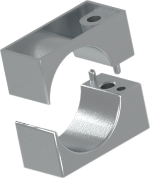
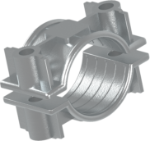
Metallic Two-Part: Again, available in both single-fixing and dual-fixing. LM6 Aluminium construction provides further increased temperature and load ratings allowing both types to carry low, medium and high voltage cable. Fully stackable and designed to mount directly to channel, ladder or any flat surface. Single-fixing for smaller cable ODs of 10-70mm and dual-fixing for ranges of 51-114mm.
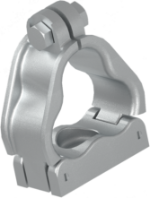
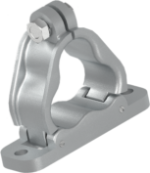
Metallic Trefoil: LM6 Aluminium construction, trefoil configuration. Specifically designed for cleating three single cables in a trefoil configuration where low to medium short circuit withstand levels are required. Available in bot single-fixing and dual-fixing.
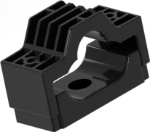
Plastic Trefoil: The TRI trefoil cleat is designed for cleating three single cables in a trefoil configuration. Glass fibre reinforced polyamide provides high mechanical strength providing increased withstand levels for low, medium and high short circuit environments.
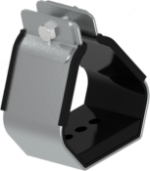
Special Use: Additional styles are available for use in extreme operating conditions. 316 Stainless steel cleats offer superior short circuit withstand levels and corrosion resistance available to suit single, trefoil, quad or bundled cables. Metallic one-part and two-part metallic cleats are also available in cast iron, for the ultimate performance in fire survival situations.